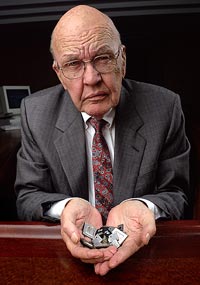
Jack St. Clair Kilby was an American electrical engineer who took part in the realization of the first integrated circuit while working at Texas Instruments (TI) in 1958. He was awarded the Nobel Prize in Physics on December 10, 2000. Kilby was also the co-inventor of the handheld calculator and the thermal printer, for which he had the patents. He also had patents for seven other inventions.
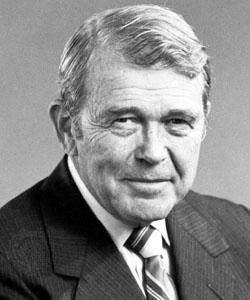
William Redington Hewlett was an American engineer and the co-founder, with David Packard, of the Hewlett-Packard Company (HP).

Gordon Earle Moore is an American businessman, engineer, and the co-founder and chairman emeritus of Intel Corporation. He is also the author of Moore's law.

Vinod Khosla is an Indian-American businessman and venture capitalist. He is a co-founder of Sun Microsystems and the founder of Khosla Ventures. Khosla made his wealth from early venture capital investments in areas such as networking, software, and alternative energy technologies. He is considered one of the most successful and influential venture capitalists.
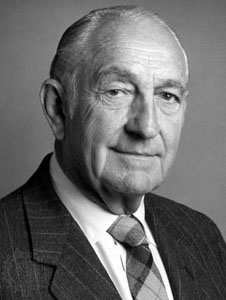
David Packard was an American electrical engineer and co-founder, with Bill Hewlett, of Hewlett-Packard (1939), serving as president (1947–64), CEO (1964–68), and chairman of the board of HP. He served as U.S. Deputy Secretary of Defense from 1969 to 1971 during the Nixon administration. Packard served as president of the Uniformed Services University of the Health Sciences (USU) from 1976 to 1981 and chairman of its board of regents from 1973 to 1982. He was a member of the Trilateral Commission. Packard was the recipient of the Presidential Medal of Freedom in 1988 and is noted for many technological innovations and philanthropic endeavors.

Chester Gordon Bell is an American electrical engineer and manager. An early employee of Digital Equipment Corporation (DEC) 1960–1966, Bell designed several of their PDP machines and later became Vice President of Engineering 1972–1983, overseeing the development of the VAX. Bell's later career includes entrepreneur, investor, founding Assistant Director of NSF's Computing and Information Science and Engineering Directorate 1986–1987, and researcher emeritus at Microsoft Research, 1995–2015.
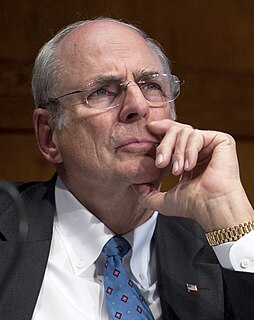
Norman (Norm) Ralph Augustine is a U.S. aerospace businessman who served as United States Under Secretary of the Army from 1975 to 1977. Augustine served as chairman and CEO of the Lockheed Martin Corporation. He was chairman of the Review of United States Human Space Flight Plans Committee.

Gerald Wayne Clough is President Emeritus of the Georgia Institute of Technology and former Secretary of the Smithsonian Institution. A graduate of Georgia Tech in civil engineering, he was the first alumnus to serve as President of the Institute.
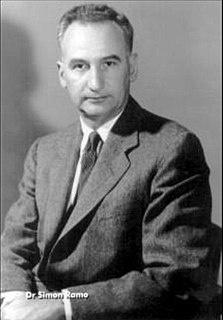
Simon "Si" Ramo was an American engineer, businessman, and author. He led development of microwave and missile technology and is sometimes known as the father of the intercontinental ballistic missile (ICBM). He also developed General Electric's electron microscope. He played prominent roles in the formation of two Fortune 500 companies, Ramo-Wooldridge and Bunker Ramo Corporation.

Paul B. MacCready Jr. was an American aeronautical engineer. He was the founder of AeroVironment and the designer of the human-powered aircraft that won the first Kremer prize. He devoted his life to developing more efficient transportation vehicles that could "do more with less".

Yakir Aharonov is an Israeli physicist specializing in quantum physics. He has been a Professor of Theoretical Physics and the James J. Farley Professor of Natural Philosophy at Chapman University in California since 2008. He is also a distinguished professor in the Perimeter Institute and a professor emeritus at Tel Aviv University in Israel. He is president of the IYAR, The Israeli Institute for Advanced Research.
The AeA was a nationwide non-profit trade association that represented all segments of the technology industry. It lobbied governments at the state, federal, and international levels; provided access to capital and business opportunities; and offered select business services and networking programs.

John G. Linvill was an American professor (emeritus) of Electrical engineering at Stanford University, known for his pioneering work in higher education, integrated circuits and semiconductors, and for development of the Optacon reading machine for the blind.
Cyril Manton Harris was Professor Emeritus of Architecture and Charles Batchelor Professor Emeritus of Electrical Engineering at Columbia University. He received his B.S. in mathematics and his M.S. in physics from UCLA, and his Ph.D. in physics from Massachusetts Institute of Technology (MIT), where he specialized in acoustics.
TechAmerica is a United States technology trade association. It was formed from the merger of AeA, the Cyber Security Industry Alliance (CSIA), the Government Electronics & Information Technology Association (GEIA), and the Information Technology Association of America (ITAA) in 2009. The organization claims to be the "high-tech industry's leading trade association". TechAmerica represents 1,200 companies within the public and commercial sectors of the economy. TechAmerica's stated goal is to provide "grassroots to global" representation for its members. To this end, the organization maintains an advocacy program in all 50 US state capitals, in Washington, DC, and in several international locations. In May 2014, CompTIA, a nonprofit trade association that serves IT professionals, announced it had acquired TechAmerica in a move to expand its public-sector presence.

Robert David Braun is an American aerospace engineer and academic. He has served as the dean of the College of Engineering and Applied Science at the University of Colorado Boulder, the David and Andrew Lewis Professor of Space Technology at the Georgia Institute of Technology, and the NASA Chief Technologist. Currently, Dr. Braun is the Space Sector Head at the Johns Hopkins University Applied Physics Laboratory (JHU/APL).
Richard B. Kaner is an American synthetic inorganic chemist. He is a Distinguished Professor and the Dr. Myung Ki Hong Endowed Chair in Materials Innovation at the University of California, Los Angeles, where he holds a joint appointment in the Department of Chemistry and Biochemistry and the Department of Material Science and Engineering. Kaner conducts research on conductive polymers (polyaniline), superhard materials and carbon compounds, such as fullerenes and graphene.
David Swenson Hogness was an American biochemist, geneticist, and developmental biologist and emeritus professor at the Stanford University School of Medicine in Stanford, California.

Julie E. Packard is an American ocean conservationist and philanthropist. She helped create the Monterey Bay Aquarium in the early 1980s and is its executive director, a position she has held since its opening in 1984. She speaks at conferences and symposia related to ocean conservation, and writes online about current issues. She is a fellow of the American Academy of Arts and Sciences and is a recipient of the Audubon Medal.














